Essential Formulas for Calculating Margins and Markups
This article will detail how to calculate a margin. However, understand this first: calculating margins and markups is an essential skill that everyone in business needs. Therefore, would you like to feel more confident working out these everyday sums? If so, join our Margins Calculating Skills Polish Up, and you won’t look back!
In this article, we cover everything you need to know about calculating margins and markups. Specifically, we look at the following topics:
- How Do You Calculate a Margin – What is the Formula?
- Gross Profit Margin Formula
- Operating Profit Margin Formula
- Net Profit Margin Formula
- Sales Margin Formula
- Formulas for Calculating Markups and Cash Margins
- How To Calculate the Selling Price of an Item, from the Cost and the Margin
- Some worked examples: How Do You Calculate a 20% Gr9oss Margin? What is a 25% Gross Margin?
- How to Calculate a Margin Percentage
- How do you Calculate a Percentage Markup?
- What is a Margin Calculator?
- What’s the best Profit Margin Calculator
- How to calculate Margin in Excel
- How to Calculate a Profit Percentage
So, let’s get started!
How to Calculate a Margin? – What is the Formula?
A ‘margin,’ or profit margin, is the net income – the cash coming in minus the outgoings – divided by the total income, times 100 per cent.
So, writing this as a formula gives:
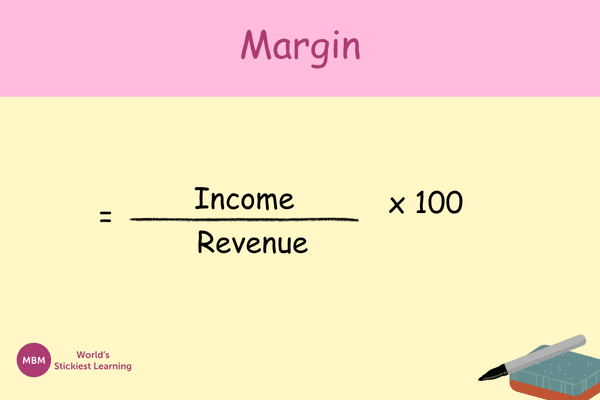
Now what are the Formulas for the Different Margins?
Starting from this ‘core’ formula, people talk about three kinds of margins when researching how to calculate a margin, which are:
1. Gross Profit Margin:
Now this is the total revenue from the sale of goods minus the total cost of the goods sold, or ‘COGS’ for short, divided by the total revenue.
2. Operating Profit Margin:
Next, this is total revenue minus the cost of the goods sold and the operating expenses, divided by the total revenue.
Sticky Learning ® is 7 times more effective than 1-day training courses. Plus, you will get a Chain of Evidence proving your Return on Investment. Discover soft skills training that changes behaviours long term.

3. Net Profit Margin:
Lastly, this is the total revenue minus all expenses, including interest and taxes, divided by the total revenue.
And there’s a different formula for each of these. Let’s look at them to better understand how to calculate a margin:
What is the Gross Profit Margin Formula?
Gross Profit Margin = Total revenue from sales minus Cost of goods sold) divided by total revenue x 100%.
So the formula is:

‘Net sales’ can be used interchangeably with ‘revenue’; in fact, net sales simply cover how much money was generated from selling the products, goods, or services. Additionally, the Cost of Goods Sold can be either the purchase price of the goods or can include other associated costs.
Retailers and other traders use the Gross Profit Margin to decide, among other things, which product categories and items to sell in order to maximise profit. When discussing the Gross Profit Margin, it’s often based on the buying and selling prices of the products and does not take into account the costs of sales, such as the operating costs of the business.
Furthermore, as featured in company financial results, the following two formulas take the operating costs into consideration.
What is the Operating Profit Margin Formula?
Total revenue minus the Cost of the Goods Sold, or ‘COGS,’ and the operating expenses involved, divided by total revenue x 100%.
For this one, the formula is:
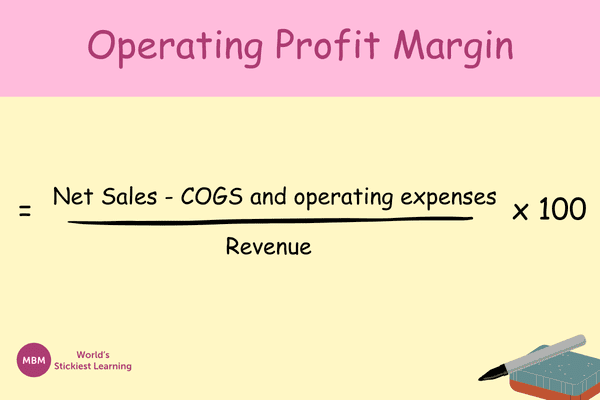
What is the Net Profit Margin Formula?
Total revenue, or net sales, minus all expenses, including interest and taxes, divided by total revenue x 100.
Note the formula for this is:

What is the Sales Margin Formula?
People also talk about the Sales Margin. This is the Operating Profit Margin from another perspective – this time, as the name suggests, from a sales point of view. So, we write the Sales Margin Formula as follows:
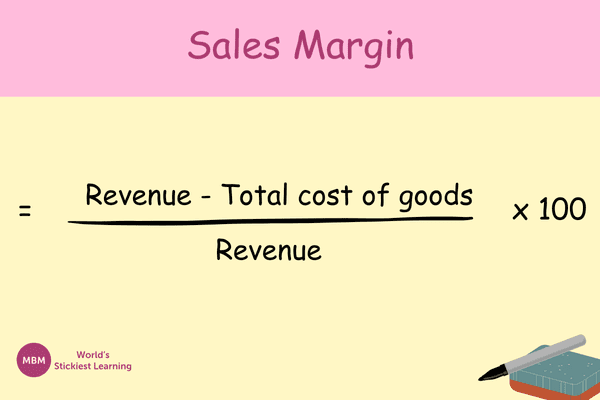
The calculation of the ‘total cost of the goods sold’ needs to include all the costs of achieving the sales, including marketing costs, sales discounts and allowances, the cost of the materials needed for the goods and services, the cost of making and supplying the goods, payments to employees, and sales commissions.
Moreover, different industry sectors, for instance, consumer products manufacturers and financial services providers, will review the profitability of their sales efforts in different ways. Nevertheless, the same calculation applies to both.
How Do You Calculate Markups and Cash Margins?

Let’s stray a little bit. However, this is still a crucial topic related to how to calculate a margin.
How to Calculate a Markup:
To calculate the markup on an item you’re selling, multiply the cost of the item by the percentage markup you want to make. Written as a formula it becomes:
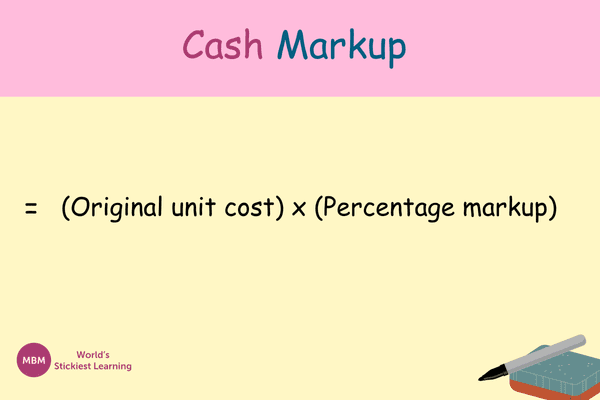
Now back to our focus on how to calculate a margin.
How to Calculate a Cash Margin:
To calculate the cash margin on an item you have bought and are selling at a known price, use:
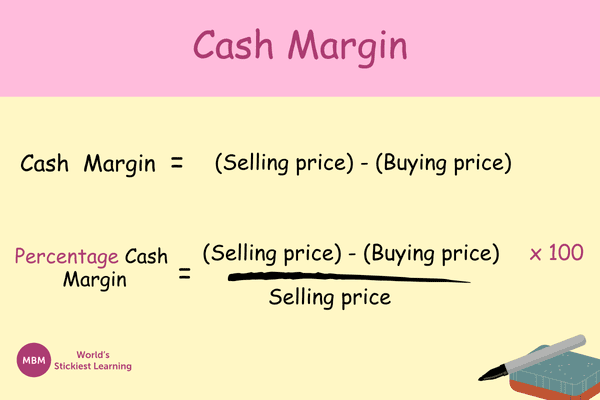
How Do You Calculate the Selling Price of an Item From the Cost and the Margin?
You calculate the selling price of an item with a known unit cost, or buying price, and a margin of xx per cent, as follows:

Okay, Now Let’s Look at Some Worked Examples of How to Calculate a Margin:
#1- How Do I Calculate a 20% Profit Margin?
Taking the selling price formula we just looked at, to find the selling price which will give you a 20% profit margin on a known unit cost, the formula is:
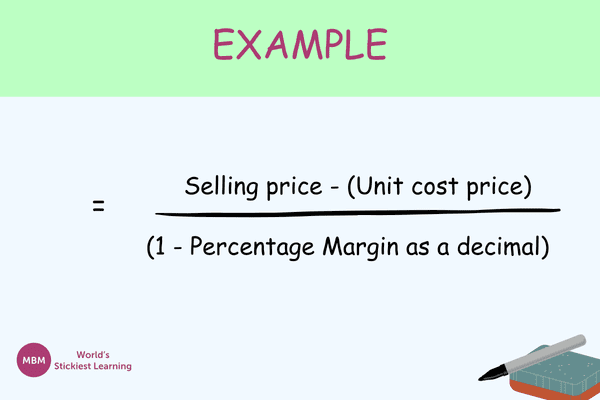
Start by expressing the margin you want, ie 20%, in its decimal form, 0.2. Then, subtract 0.2 from 1, which gives you 0.8. Therefore, if the unit cost is £1, you divide £1 by 0.8. This gives you a selling price of £1.25, on which you make a 25p profit. Check back, and you’ll see, 25p is 20% of £1.25.
Let’s try another one.
#2- How Do You Calculate a 25% Margin?
Applying the same formula, to find the selling price which will give you a 25% profit margin on a known unit cost, start by expressing the margin you want, ie 25%, in its decimal form, 0.25. Then, subtract 0.25 from 1, which gives you 0.75.
So, if the unit cost is £1, you divide £1 by 0.75. This gives you a selling price of £1.33, on which you make a 25% profit margin.
If all this maths is getting you down, the good news is, there are margin calculators online.
What is a Margin Calculator?

A margin calculator is an app that helps you work out the margin you will make selling an item at that price. Even more, margin calculators will help you calculate the gross margin percentage, the markup percentage and the gross profit of a sale from the cost and selling price of an item.
You enter the proposed sale price for a product or service and the cost of providing it to the customer. Also, there are various profit margin calculators available free online, which enable you to set product prices and improve your overall profit margin.
What’s the Best Profit Margin Calculator?
It depends on the industry sector you’re in, as you can get them tailored specifically. Influencer Marketing Hub offers a guide to the best profit margin calculators, “even if you want to do it yourself.” One calculator it suggests is the Shopify Profit Margin Calculator. Additionally, Shopify offers versions for different sectors, such as bar, restaurant, retail, and wholesale.
The point is that margin calculator apps are great for number crunching. But as with calculating percentages generally, it’s best to get your mind around the sums, or you’re flying blind. After all, it’s your business that’s on the line.
How to Calculate a Margin in Excel
To put this calculation into an Excel spreadsheet, type the starting values into the spreadsheet. For example, put the net sales amount into cell A1, and the cost of the goods sold into cell B1. Then, using cell C1, you can calculate the gross profit margin by typing the following into the cell: =(A1-B!)/A1
Our Final Topic – How Do You Calculate a Profit Percentage?

In this article, we’ve covered how to calculate a margin, and we’ve looked at various types and formulas to help you do it. However, there’s one more formula you need to know about: the profit percentage, or percentage profit.
Specifically, for a product with a known cost price and selling price, the profit is the selling price minus the cost price. Therefore, the profit percentage formula is the selling price minus the cost price, divided by the cost price.
Importantly, don’t get the Margin and the Profit percentage confused!
AND FINALLY: How do You Calculate a Percentage?
If you find working with margins hard, here’s a thought – maybe you need a refresher on percentages. Feeling confident working with these everyday sums is an important step to feeling confident about margins and markups.
Percentages boil down to this. For any two numbers X and Y, dividing X by Y and multiplying it by 100 per cent gives you the percentage that X is of Y. You can brush up your percentage calculating skills with our article on How To Calculate A Percentage.
If you’ve enjoyed this article, tell us!



